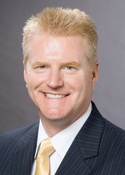A Pricey Path To Drug Discovery
By Rob Wright, Chief Editor, Life Science Leader
Follow Me On Twitter @RfwrightLSL
 This past July, GlaxoSmithKline (NYSE: GSK) agreed to buy Human Genome Sciences (NASDAQ: HGSI) for $3.6 billion. These two companies are no strangers to each other, having established a codevelopment agreement in 2006 for BENLYSTA, a prescription IV infusion treatment for systemic lupus erythematosus. Among much fanfare, the drug received FDA approval in March 2011 as the first approved treatment for SLE in more than 50 years. Obviously, GSK saw enough value in this product and the HGS’ pipeline to buy the company. In a press release, GSK CEO Andrew Witty said, “The transaction meets GSK’s strict financial criteria for acquisitions, and we expect we will deliver significant returns over the long term. This is a natural next step in our 20-year relationship with HGS.” But I began to wonder what Witty was seeing that I didn’t. Let me explain.
This past July, GlaxoSmithKline (NYSE: GSK) agreed to buy Human Genome Sciences (NASDAQ: HGSI) for $3.6 billion. These two companies are no strangers to each other, having established a codevelopment agreement in 2006 for BENLYSTA, a prescription IV infusion treatment for systemic lupus erythematosus. Among much fanfare, the drug received FDA approval in March 2011 as the first approved treatment for SLE in more than 50 years. Obviously, GSK saw enough value in this product and the HGS’ pipeline to buy the company. In a press release, GSK CEO Andrew Witty said, “The transaction meets GSK’s strict financial criteria for acquisitions, and we expect we will deliver significant returns over the long term. This is a natural next step in our 20-year relationship with HGS.” But I began to wonder what Witty was seeing that I didn’t. Let me explain.
HGS was founded in 1992 and went public just one year later. By 2000, the company had raised more than $2 billion in investments. From 1998 to 2011, the company’s annual reports indicate a net income loss for every year except 2009, and these total around $2.2 billion. So what is it that GSK found so compelling it was willing to pay a 99% premium over HGS’ April 18, 2012 closing share price of $7.17/share? One approved drug, BENLYSTA, which I estimate as potentially helping a market of around 322,000 U.S. citizens suffering from SLE, or a little more than 0.1% of the U.S. population. I would also like you to consider the fact that BENLYSTA is an adjunct therapy, meaning it is added on to other commonly used lupus treatments. So patients with SLE can take the cost of whatever they are currently taking and add around $35,000 a year — the current price for BENLYSTA in the U.S. So if just half of the potential market buys this drug, we are looking at about $5.6 billion in annual sales. I guess the $3.6 billion dollar price tag for HGS wasn’t so bad after all when you also add in some other assets — Raxibacumab, a new anthrax treatment already being purchased and stockpiled by the U.S. government, and Mapatumumab, a potential treatment for cancer. Raxibacumab and BENLYSTA are already producing revenue, though the billion dollar mark is a bit far off.
But HGS had other assets of value — people for example. Yet, I guess the HGS leadership team wasn’t part of the asset valuation deal. Just 15 days after the announced acquisition, GSK replaced the CEO, CFO, and five other executive-level positions. This is not an uncommon practice. Acquiring companies often believe they can do better without the help of the acquired company’s executives. Let’s hope so in GSK’s case. When you consider BENLYSTA was first identified in 1996, factor in initial investments, 10+ years of losses, severance packages, and the billions to acquire HGS, it has to be one of the longest, most expensive, and successful drug development projects on record.
